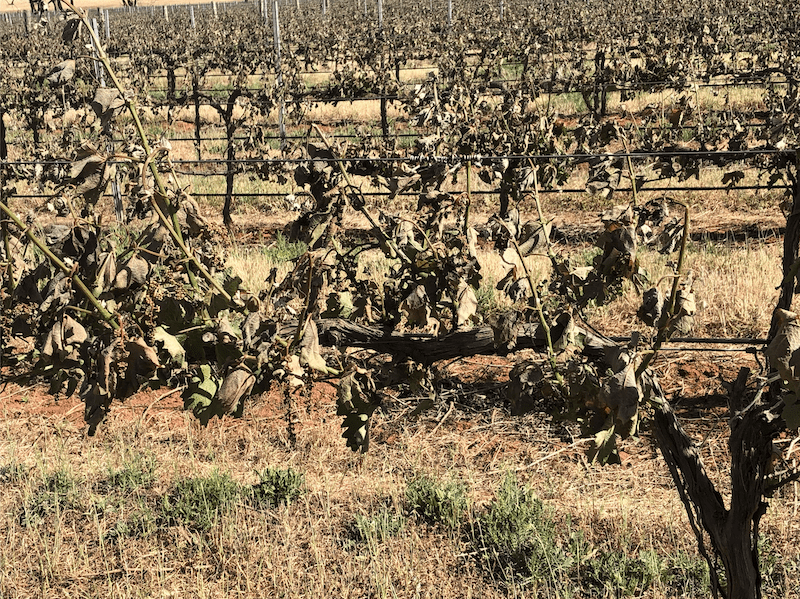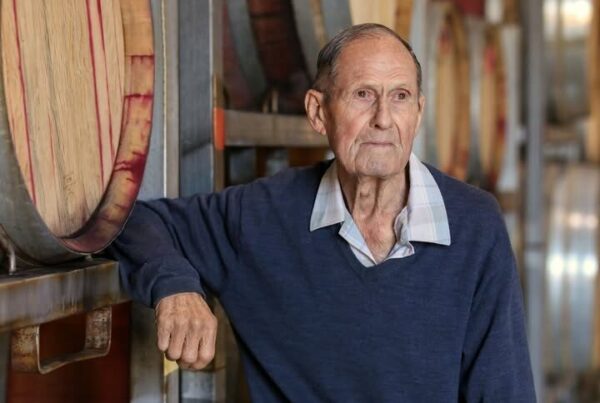
Frost has caused damage in vineyards in most regions across Australia as the El Nino weather pattern produces lower rainfall, clear days and lower night temperatures.
The Australian Wine Research Institute has issued a bulletin on preparing for frosts and managing frost-affected vines.
“The desire to act quickly after a frost is strong because you are seeing your vines in trouble, and you want to do something,” the AWRI says.
“The best thing you can do is to wait at least a week to assess the extent of the damage.
“Frost symptoms on leaves can show after a few days, while the impact on inflorescences can take a week or more to appear.
“It is also sensible to wait until the risk of frost has gone before acting, because another frost could change your plans.
“When the risk of frost has passed, conduct a careful vineyard assessment of where the damaged vines are and the extent and severity of the damage.
“If you decide you are going to take action, it is then recommended not to delay because the vine is expending energy to adjust to what has occurred.”
Light frost
If the assessment reveals that the damage to the crop is light overall, no immediate action is required. The damaged tissue may be susceptible to Botrytis if wet weather follows the frost, so this should be considered in future disease management strategies.
Severe frost early in the season
If the shoots were small and subjected to a severe frost (up to E-L 11, four leaves separated), there is no need to act because the vine will replace the lost primary shoots with a secondary shoot and the damaged shoot will shrivel up over time.
The replacement shoot will not be as fruitful as the primary shoot, but there should be a crop and fruit development should be relatively uniform. The secondary shoots should have time to lignify at the end of the season and provide good pruning options.
Once new growth emerges and has reached E-L 12, a nitrogen application can assist the new growth as the vines used up their early season reserves.
Frost damage post E-L 11
The most difficult situation to manage is where a moderate frost occurs in a vineyard at a growth stage later than E-L 12. When well-developed primary shoots are only partially damaged and the shoot tip is killed, lateral shoots will be strongly stimulated to grow from the leaf axis on the healthy parts of the primary shoot.
In this situation, there is the possibility of fruit setting from inflorescences that survived on the primary shoots as well as those coming from secondary shoots that burst plus any fruit from laterals. At harvest, this leads to variable ripeness and poor fruit quality. This lateral growth can also lead to a crowded canopy and those shoots provide poor pruning material for the following season.
Trials that have assessed post-frost options (largely ‘do nothing’ vs removing damaged primary shoots) have had variable outcomes. In terms of yield the following season, neither approach is consistently better.
A ‘do nothing’ strategy is cost-effective in the season in which the frost occurred, but it can come at the expense of the following season when pruning options are poorer and yield is impacted as a result.
Action to remove the damaged primary shoots down to the compound bud to encourage a secondary shoot is an expense that needs to be considered in terms of the impact that it has on fruit quality in the current season as well as at pruning time. For cane-pruned vineyards, having good replacement canes is critical and the ‘do nothing’ strategy may not be conducive to this.
Designed for agriculture, the Bureau of Meteorology (BOM) provides frost potential maps, which show forecast low temperature thresholds for various locations across Australia.
More information about the BOM’s frost risk outlook and frost warning service can be found in this AWRI webinar (5 September 2019).
Resources:
- Frost management in vineyards (AWRI fact sheet)
- Protecting your vineyard from frost (AWRI demonstration video)
- Managing frost (AWRI webinar 29 September 2020)
- AWRI frost information pack
- Frost control in New Zealand vineyards.
Photo: Clare vineyard hit by frost in October 2023. Supplied by Warren Randall.
Related content













Recent Comments